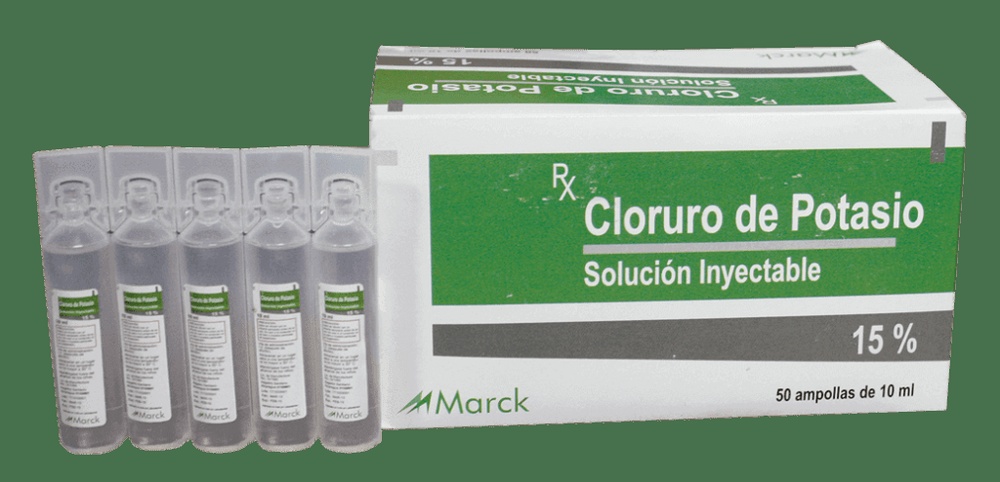

ХЛОРИД КАЛІЮ KABI 0,02 мЕкв/мл у 3,3% ГЛЮКОЗІ та 0,3% ХЛОРИДІ НАТРІЮ РОЗЧИН ДЛЯ ПЕРФУЗІЇ

Запитайте лікаря про рецепт на ХЛОРИД КАЛІЮ KABI 0,02 мЕкв/мл у 3,3% ГЛЮКОЗІ та 0,3% ХЛОРИДІ НАТРІЮ РОЗЧИН ДЛЯ ПЕРФУЗІЇ

Інструкція із застосування ХЛОРИД КАЛІЮ KABI 0,02 мЕкв/мл у 3,3% ГЛЮКОЗІ та 0,3% ХЛОРИДІ НАТРІЮ РОЗЧИН ДЛЯ ПЕРФУЗІЇ
Введення
Опис: Інформація для користувача
Хлорид калію Кабі 0,02 мЕк/мл у глюкозі 3,3% та хлориді натрію 0,3% Розчин для інфузії
Хлорид калію, глюкоза, хлорид натрію
Прочитайте уважно весь опис перед тим, як почнете приймати цей лікарський засіб,адже він містить важливу інформацію для вас.
- Збережіть цей опис, оскільки вам може знадобитися знову його прочитати.
- Якщо у вас виникли питання, проконсультуйтеся з вашим лікарем або фармацевтом.
- Якщо ви відчуваєте побічні ефекти, проконсультуйтеся з вашим лікарем або фармацевтом, навіть якщо це побічні ефекти, які не вказані в цьому описі. Див. розділ 4.
Зміст опису
- Що таке Хлорид калію Кабі 0,02 мЕк/мл у глюкозі 3,3% та хлориді натрію 0,3% Розчин для інфузії і для чого він використовується.
- Що вам потрібно знати перед тим, як почати використовувати Хлорид калію Кабі 0,02 мЕк/мл у глюкозі 3,3% та хлориді натрію 0,3% Розчин для інфузії.
- Як використовувати Хлорид калію Кабі 0,02 мЕк/мл у глюкозі 3,3% та хлориді натрію 0,3% Розчин для інфузії.
- Можливі побічні ефекти.
- Зберігання Хлориду калію Кабі 0,02 мЕк/мл у глюкозі 3,3% та хлориді натрію 0,3% Розчину для інфузії.
- Зміст упаковки та додаткова інформація.
1. Що таке Хлорид калію Кабі 0,02 мЕк/мл у глюкозі 3,3% та хлориді натрію 0,3% Розчин для інфузії і для чого він використовується
Цей лікарський засіб містить наступні активні речовини: хлорид калію, глюкоза (у вигляді моногідрату) та хлорид натрію. Цей лікарський засіб є розчином для інфузії і буде введено вам у вену через тонку трубку.
Цей лікарський засіб належить до групи лікарських засобів, які називаються інтравенозними розчинами, що впливають на електролітний баланс - електроліти з вуглеводами (використовуються для підтримання рідини організму в нормальному балансі).
Цей лікарський засіб призначений для профілактики або лікування нестачі калію (електроліту) в організмі, коли вам потрібно введення води, електролітів і вуглеводів, оскільки дієтичні заходи або прийом лікарських засобів перорально є недостатніми.
2. Що вам потрібно знати перед тим, як почати використовувати Хлорид калію Кабі 0,02 мЕк/мл у глюкозі 3,3% та хлориді натрію 0,3% Розчин для інфузії
Не використовуйте Хлорид калію Кабі 0,02 мЕк/мл у глюкозі 3,3% та хлориді натрію 0,3%
- якщо ви алергічні на хлорид калію, глюкозу або хлорид натрію чи будь-які інші компоненти цього лікарського засобу (перелічені в розділі 6)
- якщо ваш рівень калію в крові підвищений (гіперкаліємія)
- якщо ви страждаєте на важку ниркову хворобу з олігурією (зниженою виділенням сечі), анурією (відсутністю виділення сечі) або азотемією (присутністю надлишку азотистих відходів у крові через ниркову недостатність)
- якщо ваш рівень хлоридів в крові підвищений (гіперхлоремія)
- якщо ваш рівень натрію в крові підвищений (гіпернатріємія)
- якщо ви страждаєте на стан гіпергідрації (надлишок води в організмі)
- якщо ви страждаєте на стани гіперглікемії (підвищеного рівня глюкози в крові) як у випадках коми гіперосмолярної, цукрового діабету або інших порушень толерантності до глюкози, таких як метаболічний стрес.
- якщо ви страждаєте на тубулярну ацидоз нирок (порушення функції нирок)
- якщо ви страждаєте на гострий ішемічний інсульт (раптову втрату функції мозку через блокування кровотоку)
- під час перших 24 годин після черепно-мозкової травми.
Попередження та обережність
Проконсультуйтеся з вашим лікарем або медсестрою перед тим, як почати використовувати Хлорид калію Кабі 0,02 мЕк/мл у глюкозі 3,3% та хлориді натрію 0,3% Розчин для інфузії.
Введення калію повинно здійснюватися завжди під суворим медичним контролем. Під час введення цього лікарського засобу та з метою раннього виявлення ознак надлишку калію (гіперкаліємії) ваш лікар буде контролювати ваше серце за допомогою електрокардіограми та періодично проводитиме аналіз крові для визначення рівня калію в крові, особливо:
- якщо ви страждаєте на якусь серцеву або ниркову хворобу чи інші стани, які сприяють появі гіперкаліємії.
- якщо ви приймаєте інші лікарські засоби, які можуть підвищувати рівень калію в крові (див. наступний підпункт).
Ваш лікар повинен бути особливо обережним, якщо ви приймаєте дигіталіс, особливо при зупиненні введення калію, оскільки раптове зниження рівня калію може спричинити токсичність дигіталісу. У цих випадках лікування калієм не повинно зупинятися раптово.
Розчин калію повинен вводитися тільки у разі наявності адекватного діурезу. Якщо цього немає, можливо, вам потрібно буде вводити розчин, який не містить калію.
Ваш лікар буде проводити часті медичні та лабораторні дослідження для контролю змін у балансі рідини та кислотно-лужного балансу та рівня електролітів і глюкози в крові.
Якщо ви знаходитесь в стані надзвичайної ситуації та ваш рівень калію в крові дуже низький або якщо ви приймаєте лікарські засоби дигіталіс, не рекомендується введення розчинів глюкози, оскільки присутність глюкози перешкоджає підвищенню рівня калію так швидко, як потрібно.
Якщо ви страждаєте на епізоди внутрішньочерепної гіпертензії, ваш лікар буде тісно контролювати рівень глюкози в крові.
Оскільки цей лікарський засіб містить глюкозу, його слід вводити з обережністю, якщо у вас є дефіцит вітаміну В1 або цукровий діабет. Ваш лікар може призначити цей лікарський засіб тільки у разі наявності попереднього адекватного лікування.
Оскільки цей лікарський засіб містить натрій, його слід вводити з обережністю, якщо ви страждаєте на гіпертонію, серцеву недостатність, легеневий або периферичний набряк, ниркову недостатність, прееклампсію (розвиток гіпертонії під час вагітності) чи інші стани, пов'язані з надлишком натрію, а також якщо ви приймаєте кортикостероїди або кортикотропін (див. наступний підпункт).
Цей лікарський засіб повинен вводитися з особливою обережністю, якщо вам більше 65 років, оскільки ви можете приймати інші лікарські засоби (див. наступний підпункт) або у вас можуть бути порушення функції нирок чи серця, або інші захворювання, які можуть впливати на рівень калію в крові.
Якщо введення триває, може виникнути екстравазація (виведення розчину з вени в навколишню тканину) або тромбофлебіт (запалення вени, пов'язане з утворенням тромбів).
Будьте особливо обережні з Хлоридом калію Кабі 0,02 мЕк/мл у глюкозі 3,3% та хлориді натрію 0,3% Розчином для інфузії:
- Якщо ви страждаєте на критичні стани, біль, післяопераційний стрес, інфекції, опіки або захворювання центральної нервової системи.
- У вас є будь-яке захворювання серця, печінки та нирок, і ви приймаєте лікарські засоби, які підвищують дію вазопресину (гормону, який регулює збереження води організмом), оскільки це може підвищити ризик розвитку гіпонатріємії (низького рівня натрію в крові) у лікарні. (див. розділ «Використання Хлориду калію Кабі 0,02 мЕк/мл у глюкозі 3,3% та хлориді натрію 0,3% Розчину для інфузії з іншими лікарськими засобами»).
Усі пацієнти повинні бути під суворим контролем. У випадках, коли нормальна регуляція вмісту води в крові порушується через підвищення секреції вазопресину, також званої антидіуретичною гормоном (АДГ), введення рідини з низькою концентрацією хлориду натрію (гіпотонічні рідини) може привести до низького рівня натрію в крові (гіпонатріємії). Це може спричинити головний біль, нудоту, судоми, спання, кому, набряк мозку (едем мозку) та смерть; тому ці симптоми (гіпонатріємічна енцефалопатія) вважаються медичною надзвичайною ситуацією. (див. розділ 4. Можливі побічні ефекти).
Діти, жінки репродуктивного віку та пацієнти з захворюваннями мозку, такими як менінгіт, геморагічний інсульт, контузія мозку та набряк мозку, мають особливий ризик розвитку важкого та потенційно смертельного набряку мозку, викликаного гострою гіпонатріємією.
Використання Хлориду калію Кабі 0,02 мЕк/мл у глюкозі 3,3% та хлориді натрію 0,3% Розчину для інфузії з іншими лікарськими засобами
Повідомте вашому лікареві або фармацевту, якщо ви приймаєте, нещодавно приймали або можете приймати інші лікарські засоби. Особливо важливо повідомити вашому лікареві, якщо ви приймаєте:
- Лікарські засоби, які можуть підвищувати рівень калію в крові через додавання їхніх ефектів, особливо якщо ваші нирки не функціонують правильно:
- Діуретики, що зберігають калію (амілорид, триамтерен, спіронолактон, еплеренон)
- Інгібітори ангіотензинперетворюючого ферменту (АПФ) (наприклад, каптоприл, еналаприл, лізиноприл)
- Антагоністи рецепторів ангіотензину II (кан데сартан, телмісартан, епросартан, ірбесартан, лозартан, валсартан)
- Лікарські засоби, які містять калію, такі як калійні солі пеніциліну
- Протизапальні нестероїдні лікарські засоби (ПНЗЛЗ) (диклофенак, індометацин, піроксикам, мефенамова кислота, целекоксиб)
- Гепарин
- Пентамідин, триметоприм
- Циклоспорин, такролімус
- Бета-адреноблокатори (пропранолол, надолол, атенолол)
- Суксинілхолін (суксаметоній)
- Лікарські засоби, які можуть знижувати рівень калію в крові, тому можуть бути необхідні вищі дози калію:
- Кортикостероїди
- Діуретики (діуретики петлі, тіазиди та споріднені діуретики, осмотичні діуретики, інгібітори ангідрази карбонової кислоти)
- Високі дози пеніцилінів
- Аміноглікозиди
- Цисплатин
- Фоскарнет
- Амфотерцин Б
- Теофілін
- Інсулін
- Кислота фолієва та вітамін В12
- Агоністи бета-2-адренорецепторів
- Глікозиди дигіталісу (дигоксин і метилдигоксин) (високі рівні калію можуть знижувати їхній ефект, а раптове зниження рівня калію може спричинити отруєння дигіталісом)
- Протияритмічні лікарські засоби (наприклад, хінідин, гідрохінідин, прокаїнамід) (високі рівні калію підвищують їхню активність, а низькі рівні калію знижують їхню ефективність)
- Карбонат літію (натрій може прискорити виділення літію з організму, що призводить до зниження терапевтичної дії літію)
- Кортикостероїди з мінералокортикоїдною активністю (наприклад, флудрокортизон) або АКТГ (кортикотропін) (ці лікарські засоби сприяють збереженню води та натрію)
- Кортикостероїди з глюкокортикоїдною активністю (наприклад, гідрокортизон) (ці лікарські засоби можуть підвищувати рівень глюкози в крові)
- Інсулін та пероральні антидіабетичні лікарські засоби (бігуаніди, сульфонілурети) (глюкоза може знижувати їхній ефект).
- Лікарські засоби, які підвищують дію вазопресину (див. розділ «Попередження та обережність»), наприклад:
- Лікарські засоби, які стимулюють виділення вазопресину (наприклад, антипсихотичні лікарські засоби, наркотичні лікарські засоби)
- Лікарські засоби, які посилюють дію вазопресину (наприклад, протизапальні нестероїдні лікарські засоби)
- Лікарські засоби, які діють як вазопресин, так звані аналоги вазопресину
Інші лікарські засоби, які підвищують ризик гіпонатріємії, включаючи діуретики загалом та антиепілептичні лікарські засоби.
Вагітність, лактація та фертильність
Якщо ви вагітні або годуєте грудьми, вважаєте, що можете бути вагітні або плануєте вагітність, проконсультуйтеся з вашим лікарем або фармацевтом перед тим, як використовувати цей лікарський засіб.
Безпека використання цього лікарського засобу під час вагітності та лактації не встановлена. Тому його слід використовувати тільки у разі, коли очікувані користі явно переважають можливі ризики для плоду або дитини.
Цей лікарський засіб повинен вводитися з особливою обережністю у вагітних жінок під час пологів, особливо якщо він вводиться в поєднанні з окситоцином (гормоном, який може вводитися для стимулювання пологів та контролю кровотечі) через ризик гіпонатріємії.
Введення великих кількостей розчинів, які містять глюкозу, під час пологів, особливо у складних пологах, може спричинити гіперглікемію, гіперінсулінемію (високі рівні інсуліну в крові) та ацидоз у плода та, як наслідок, може бути шкідливим для новонародженого.
Оскільки цей лікарський засіб містить натрій, слід бути особливо обережним у випадках прееклампсії під час вагітності.
Якщо ви вагітні або годуєте грудьми, ваш лікар повинен постійно контролювати ваше серце та рівень калію в крові, оскільки у разі порушення цих показників можуть виникнути серйозні порушення серцевої діяльності як у матері, так і в плода чи новонародженого.
Водіння транспортних засобів та робота з машинами
Не актуально.
3. Як використовувати Хлорид калію Кабі 0,02 мЕк/мл у глюкозі 3,3% та хлориді натрію 0,3% Розчин для інфузії
Цей лікарський засіб буде введено вам лікарем або іншим медичним працівником шляхом капельної інфузії (введення у вену).
Ваш лікар визначить дозу, яку вам потрібно отримати, враховуючи ступінь гіпокаліємії, ваш вік, вагу та клінічний стан (особливо якщо у вас є захворювання серця чи нирок), а також тривалість лікування.
Максимальна рекомендуєма доза калію становить 2-3 мЕк/кг/добу. У дорослих доза калію не повинна перевищувати 200 мЕк на добу. Рекомендована доза для задоволення потреб у підтримці становить 40-80 мЕк на добу.
Ваш лікар визначить кількість рідини, яку вам потрібно отримати. Однак загалом не слід вводити більше 40 мл/кг/добу (максимально 3000 мл на добу).
Кількість глюкози, введеної з розчином, не повинна перевищувати 4-5 мг/кг/хв.
Якщо ваші нирки не функціонують правильно, вам потрібно буде отримати меншу дозу.
Загалом, швидкість інфузії ніколи не повинна перевищувати 20 мЕк калію на годину, коли лікарський засіб вводиться через периферичну вену.
Використання у дітей та підлітків
У дітей доза калію не повинна перевищувати 3 мЕк/кг/добу, а добова потреба в підтримці становить 2-2,5 мЕк/кг
Рекомендована добова доза рідини для цих пацієнтів становить:
- менше 10 кг ваги: 100 мл/кг
- між 10 та 20 кг ваги: 1000 мл + 50 мл/кг, що перевищує 10 кг
- більше 20 кг ваги: 1500 мл + 20 мл/кг, що перевищує 20 кг
Оральне введення добавок калію або споживання продуктів, багаті калієм, повинно замінити внутрішньовенне введення цього лікарського засобу якомога скоріше.
Якщо ви прийняли більше Хлориду калію Кабі 0,02 мЕк/мл у глюкозі 3,3% та хлориді натрію 0,3% Розчину для інфузії, ніж потрібно
Надмірне введення розчинів калію може спричинити гіперкаліємію, яка може бути потенційно смертельною, особливо якщо ваші нирки не функціонують правильно. У разі передозування також можуть виникнути порушення балансу рідини та електролітів у крові, набряк та порушення серцевої діяльності (див. симптоми в розділі 4. Можливі побічні ефекти).
У разі гіперкаліємії ваш лікар повинен зупинити введення лікарського засобу та вжити необхідних заходів для зниження рівня калію в крові.
У разі передозування або випадкового прийому лікарського засобу проконсультуйтеся з вашим лікарем або фармацевтом або зверніться до служби токсикологічної інформації, телефон: 91 562 04 20.
4. Можливі побічні ефекти
Як і всі ліки, цей препарат може викликати побічні ефекти, хоча не всі люди їх відчувають.
Після введення цього препарату може виникнути гіпергідратування (затримка рідини), гіперглікемія, гіперхлоремічна ацидоз (високий вміст хлоридів у крові) та гіперкаліємія, особливо якщо розчин вводиться занадто швидко або в надмірній кількості, або якщо нирки пацієнта не функціонують належним чином. Симптоми гіперкаліємії переважно впливають на нерви, м'язи та серце, і включають свербіж або оніміння кінцівок, м'язову слабкість, параліч, при якому м'язи стають фляцидними, респіраторний параліч, кишковий параліч, порушення психіки, втрата рефлексів, апатія, холодна шкіра, блідість (сіруватий відтінок шкіри), слабкість і важкість ніг, гіпотонія (низький кров'яний тиск), порушення електрокардіограми, порушення серцевого ритму, блокада серця та серцевий арест. Дуже важливо, щоб лікар контролював серцеву діяльність для оцінки тяжкості можливої гіперкаліємії.
Також можуть виникнути побічні ефекти, пов'язані з внутрішньовенним введенням. Ці ефекти включають лихоманку, інфекцію в місці ін'єкції, місцевий біль, венозний запалення, венозний тромбоз (утворення згустку), запалення, загустіння або скорочення вени, екстравазація та некроз (смерть тканини).
Наступні побічні ефекти можуть виникнути у деяких людей:
- Високі рівні калію і/або глюкози в крові, затримка рідини, гіперхлоремічна ацидоз
- Порушення психіки, апатія
- М'язова слабкість, свербіж або оніміння кінцівок, втрата рухової функції м'язів (параліч), втрата рефлексів, відчуття слабкості та важкості
- Серйозна або повна слабкість дихальних м'язів
- Закупорка кишечника через відсутність руху кишкових м'язів
- Порушення серцевого ритму, блокада серця, серцевий арест
- Інфекція в місці ін'єкції
- Лихоманка
- Запалення, загустіння або скорочення вени, в якій вводиться препарат, венозний тромбоз, холодна шкіра, блідість (сіруватий відтінок шкіри), гіпотонія
- Біль, запалення, екстравазація та некроз в місці ін'єкції
- Порушення електрокардіограми
Головний біль, нудота, судоми, летаргія. Це може бути викликано низьким рівнем натрію в крові. Коли рівні натрію в крові знижуються значно, вода проникає в клітини мозку та викликає їхнє запалення. Це може викликати підвищення внутрішньочерепного тиску та гіпонатремічну енцефалопатію.
Звіт про побічні ефекти
Якщо ви відчуваєте будь-який побічний ефект, зверніться до свого лікаря або фармацевта, навіть якщо це можливі побічні ефекти, які не вказані в цьому листку.
5. Зберігання хлориду потасію Кабі 0,02 мЕк/мл у глюкозі 3,3% та хлориді натрію 0,3% Розчин для перфузії
Тримайте цей препарат поза досяжністю дітей.
Не використовуйте цей препарат після закінчення терміну придатності, вказаного на упаковці після CAD. Термін придатності - останній день місяця, який вказано.
Зберігайте при температурі нижче 30°C. Після відкриття упаковки розчин повинен бути використаний негайно.
Цей препарат призначено для одноразового використання. Викидайте невикористаний розчин.
Не використовуйте цей препарат, якщо ви помітили, що розчин не є прозорим або містить частинки, або якщо упаковка пошкоджена.
Ліки не повинні викидати в каналізацію чи сміття. Спитайте свого фармацевта, як позбутися упаковок та ліків, які вам більше не потрібні. Таким чином ви допоможете захистити довкілля.
6. Зміст упаковки та додаткова інформація
Склад хлориду потасію Кабі 0,02 мЕк/мл у глюкозі 3,3% та хлориді натрію 0,3% Розчин для перфузії
- Активні речовини - хлорид потасію, глюкоза та хлорид натрію. Кожні 100 мл цього препарату містять 0,15 г хлориду потасію, 3,3 г глюкози (у вигляді моногідрату) та 0,33 г хлориду натрію.
- Інші компоненти (експіцієнти) - хлоридна кислота та гідроксид натрію (для регулювання pH) та вода для ін'єкційних препаратів
Вигляд продукту та вміст упаковки
Хлорид потасію Кабі 0,02 мЕк/мл у глюкозі 3,3% та хлориді натрію 0,3% Розчин для перфузії - прозорий та безбарвний розчин.
Цей препарат випускається у флаконах з поліетилену (Kabipac). Упаковки містять 10 флаконів по 500 мл або 10 флаконів по 1000 мл.
Можливо, що тільки деякі розміри упаковок будуть реалізовані.
Власник дозволу на торгівлю та відповідальна особа за виробництво
Власник дозволу на торгівлю
Fresenius Kabi Іспанія, S.A.U.
Марина 16-18,
08005 Барселона
Іспанія
Відповідальна особа за виробництво
Labesfal – Laboratórios Almiro, S.A.
Зона Індустріал ду Лагеду
3465-157 Сантьягу-де-Бестейруш
Португалія
Дата останнього перегляду цьогопроспекту: Березень 2018
Детальна та актуальна інформація про цей препарат доступна на сайті Агенції з лікарських засобів та медичних продуктів Іспанії (AEMPS) http://www.aemps.gob.es/
------------------------------------------------------------------------------------------------------------------------------
Ця інформація призначена лише для медичних працівників:
Хлорид потасію Кабі 0,02 мЕк/мл у глюкозі 3,3% та хлориді натрію 0,3% Розчин для перфузії - готовий до використання розчин, який повинен бути введений шляхом повільної перфузії.
Теоретична осмолярність розчину становить 336 мОсм/л.
Враховуючи концентрацію калію в розчині (20 мЕк/л), цей препарат підходить для введення через периферичні вени. Якщо використовується центральна вена, рекомендується використовувати феморальну вену та уникати югулярної та субклавіальної вен.
Загалом не рекомендується перевищувати 40 мЕк/л при периферичному введенні.
Дозування:
Доза та тривалість лікування повинні бути індивідуалізовані для кожного пацієнта, залежно від тяжкості гіпокаліємії, віку, ваги та клінічного стану, особливо у разі серцевої або ниркової недостатності.
Доза та швидкість введення повинні бути визначені за допомогою електрокардіографічного моніторингу та визначення рівня калію в плазмі.
У дорослих максимальна рекомендуєма доза калію становить 2-3 мЕк/кг/добу, без перевищення 200 мЕк/добу, при цьому 40-80 мЕк/добу - це доза, рекомендуєма для підтримуючої терапії.
Швидкість введення рідини повинна бути розрахована для кожного пацієнта залежно від потреб у заміні або підтримці. Однак загалом не слід вводити більше 40 мл/кг/добу (макс. 3000 мл на добу).
Кількість глюкози, введеної з розчином, не повинна перевищувати 4-5 мг/кг/хв.
У дітей доза калію не повинна перевищувати 3 мЕк/кг/добу, а добові потреби в підтримці становлять 2-2,5 мЕк/кг.
Рекомендована добова доза рідини для цих пацієнтів така:
- < 10 кг ваги: 100 мл/кг
- між 10 та 20 кг ваги: 1000 мл + 50 мл/кг, що перевищує 10 кг
- > 20 кг ваги: 1500 мл + 20 мл/кг, що перевищує 20 кг
Пацієнти з нирковою недостатністю повинні отримувати нижчі дози через ризик гіперкаліємії.
Введення калію внутрішньовенно зі швидкістю 10 мЕк/годину вважається безпечним. Коли швидкість введення перевищує 10 мЕк/годину, проводиться тісний моніторинг пацієнта за допомогою ЕКГ та періодичних визначень концентрації калію в плазмі. Загалом швидкість перфузії через периферичні вени не повинна перевищувати 20 мЕк/годину. Через центральну вену можуть бути досягнуті вищі швидкості введення.
Загальні рекомендації для введення інтравенозних розчинів калію:
Периферична вена | Центральна вена | ||
Концентрація калію | ≤ 40 мЕк/л | ≤ 100 мЕк/л Концентрації вище 60 мЕк/л потребують тісного моніторингу ЕКГ | |
Швидкість перфузії | Гіпокаліємія середньої тяжкості (К+ ≥ 2,5 мЕк/л) | ≤ 10 мЕк/годину | ≤ 20 мЕк/годину |
Гіпокаліємія високої тяжкості (К+ < 2,5 мЕк/л) | ≤ 20 мЕк/годину | ≤ 20 мЕк/годину (в виняткових випадках, у ситуаціях загрози життю, до 40 мЕк/годину з тісним моніторингом ЕКГ) |
Попередження щодо підготовки та обробки:
Вміст кожного флакону призначено для одноразового використання. Невикористаний вміст повинен бути викинутий.
Розчин повинен бути прозорим та не містити частинок. Не вводити в іншому випадку.
Використовуйте асептичну техніку для введення розчину, а також для додавання ліків до розчину, якщо це необхідно.
Як і з усіма парентеральними розчинами, перед додаванням ліків до розчину або одночасним введенням з іншими ліками слід перевірити відсутність не сумісності ліків, які додаються до розчину, або з упаковкою. Також слід проконсультуватися з інструкцією лікувального засобу, який додається.
Відповідальність користувача - оцінити не сумісність додаваного лікувального засобу з хлоридом потасію Кабі 0,02 мЕк/мл у глюкозі 3,3% та хлориді натрію 0,3% Розчином для перфузії, спостерігаючи за можливими змінами кольору та/або утворенням осаду, нерозчинних комплексів або кристалів.
Перед введенням суміші слід перевірити стабільність та осмолярність кінцевого розчину.
Коли додається сумісний лікувальний засіб до цієї формули, розчин повинен бути введений негайно, якщо тільки розведення не проводиться в асептичних умовах та не підтверджено.
Не сумісності:
Не виявлено досліджень, які описують не сумісності, пов'язані з цим препаратом, але вони описані для активних речовин розчину.
Хлорид потасію в інтравенозних сумішах виявився не сумісним з натрієвою амоксиліном, амфотерикіном Б, гідрохлоридом добутаміну та натрієвою пеніциліном Г. Аналогічно, не рекомендується введення в "Y" наступних лікарських засобів, коли вводяться суміші калію: азитроміцин, гідрохлорид прометазину, дазепам, натрієва фенітоїн, сукцинат натрію метилпреднізолону або тартрат ерготаміну.
Відомо, що глюкозо-солінський розчин з вмістом глюкози 3,3% та хлориду натрію 0,3% не сумісний з мітоміцином через низький pH цього розчину. Аналогічно, спостерігалися зразки не сумісності для різних глюкозо-солінських розчинів з: натрієвою фенітоїном, натрієвою гепарином, лактатом галоперидолу, іміпенем-циластатином натрію та меропенемом. Однак деякі з цих лікарських засобів можуть бути сумісними з глюкозо-солінськими розчинами залежно від різних факторів, таких як концентрація лікарського засобу в розчині (натрієва гепарин) або час, який минув між розведенням та введенням розчину (іміпенем-циластатин натрію та меропенем).
З іншого боку, спостерігалися ознаки не сумісності, коли деякі лікарські засоби розведені в розчинах, які містять глюкозу, серед них: натрієва амоксиліном/кислота клавуланова, натрієва ампицилін, інтерферон альфа-2б та гідрохлорид прокаїнаміду. Однак слід зазначити, що деякі з цих лікарських засобів, наприклад натрієва амоксиліном/кислота клавуланова, можуть вводитися безпосередньо в місце ін'єкції під час введення цих розчинів для перфузії.
Також спостерігалися ознаки не сумісності, коли деякі лікарські засоби розведені в розчинах, які містять хлорид, серед них: амсакрин та глюкуронат триметроксату.
Лікування надзвичайних станів у разі гіперкаліємії:
Лікування гіперкаліємії залежить від її тяжкості. Було встановлено різні режими, які включають введення кальцію для протидії негативним ефектам гіперкаліємії на серце, використання інсуліну та глюкози або бікарбонату натрію для促отворення виходу калію з клітин, та/або використання діуретиків, катионних обмінних смол або діалізу для збільшення його виділення:
- Якщо існують кардіальні прояви: введення солей кальцію внутрішньовенно (10-20 мл глюконату кальцію 10%). У деяких випадках може знадобитися повторне введення.
- Для швидкого зниження рівня калію в плазмі: введення інсуліну та глюкози внутрішньовенно (наприклад, 5-15 одиниць інсуліну разом з 50 мл глюкози 50%). Альтернативно або додатково, у пацієнтів з ацидозом можна вводити бікарбонат натрію внутрішньовенно (40-160 мЕк, введених за 5 хвилин).
- Для видалення надмірної кількості калію з організму: використання діуретиків, особливо діуретиків петлі (фуросемід), катионних обмінних смол (полістиренсульфонат натрію або кальцію) перорально або ректально, або гемодіалізу чи перитонеального діалізу у випадках важкої ниркової недостатності та гіперкатаболізму.
Швидке зниження рівня калію в крові у пацієнтів, які приймають дигоксин, може викликати кардіотоксичність.
Профілактичні заходи для уникнення тромбофлебіту:
Якщо введення триває, може виникнути екстравазація або тромбофлебіт. Для уникнення тромбофлебіту рекомендується змінювати місце введення катетера кожні 24-48 годин.
Загальний порада
Можливо, що потрібно буде контролювати водний баланс, рівень глюкози в крові, натрію в крові та інших електролітів до та під час введення, особливо у пацієнтів з підвищеною секрецією антидіуретичного гормону (синдром неадекватної секреції антидіуретичного гормону, СІАДГ) та у пацієнтів, які приймають лікарські засоби, що стимулюють діурез, через ризик гіпонатремії.
Контроль рівня натрію в крові особливо важливий для продуктів з нижчою концентрацією натрію порівняно з концентрацією натрію в крові. Після перфузії хлориду потасію Кабі 0,02 мЕк/мл у глюкозі 3,3% та хлориді натрію 0,3% Розчином для перфузії відбувається швидке та активне транспортування глюкози до клітин організму. Ця умова сприяє ефекту, який можна вважати наданням вільної води, та може привести до важкої гіпонатремії.
- Країна реєстрації
- Діючі речовини
- Потрібен рецептТак
- Виробник
- Інформація є довідковою і не є медичною порадою. Перед прийомом будь-яких препаратів обов'язково проконсультуйтеся з лікарем. Oladoctor не несе відповідальності за медичні рішення, прийняті на основі цього контенту.
- Альтернативи до ХЛОРИД КАЛІЮ KABI 0,02 мЕкв/мл у 3,3% ГЛЮКОЗІ та 0,3% ХЛОРИДІ НАТРІЮ РОЗЧИН ДЛЯ ПЕРФУЗІЇФорма випуску: РОЗЧИН ДЛЯ ІНФУЗІЙ, ЩО ВВОДИТЬСЯ ІН'ЄКЦІЙНО, 0,09 г / 0,07 г / 1,6 г / 0,17 г / 12,5 г / 0,19 г / 1,23 гДіючі речовини: electrolytes with carbohydratesВиробник: Fresenius Kabi España, S.A.U.Потрібен рецептФорма випуску: РОЗЧИН ДЛЯ ІНФУЗІЙ, ЩО ВВОДИТЬСЯ ІН'ЄКЦІЙНО, 0,31 г / 21,9 мг / 0,03 г / 0,6 гДіючі речовини: electrolytes with carbohydratesВиробник: Fresenius Kabi España, S.A.U.Потрібен рецептФорма випуску: РОЗЧИН ДЛЯ ІНФУЗІЙ, ЩО ВВОДИТЬСЯ ІН'ЄКЦІЙНО, NAДіючі речовини: electrolytes with carbohydratesВиробник: Fresenius Kabi España, S.A.U.Потрібен рецепт
Аналоги ХЛОРИД КАЛІЮ KABI 0,02 мЕкв/мл у 3,3% ГЛЮКОЗІ та 0,3% ХЛОРИДІ НАТРІЮ РОЗЧИН ДЛЯ ПЕРФУЗІЇ в інших країнах
Найкращі аналоги з тією самою діючою речовиною та терапевтичним ефектом.
Аналог ХЛОРИД КАЛІЮ KABI 0,02 мЕкв/мл у 3,3% ГЛЮКОЗІ та 0,3% ХЛОРИДІ НАТРІЮ РОЗЧИН ДЛЯ ПЕРФУЗІЇ у Polonia
Аналог ХЛОРИД КАЛІЮ KABI 0,02 мЕкв/мл у 3,3% ГЛЮКОЗІ та 0,3% ХЛОРИДІ НАТРІЮ РОЗЧИН ДЛЯ ПЕРФУЗІЇ у Ucrania
Лікарі онлайн щодо ХЛОРИД КАЛІЮ KABI 0,02 мЕкв/мл у 3,3% ГЛЮКОЗІ та 0,3% ХЛОРИДІ НАТРІЮ РОЗЧИН ДЛЯ ПЕРФУЗІЇ
Консультація щодо дозування, побічних ефектів, взаємодій, протипоказань та поновлення рецепта на ХЛОРИД КАЛІЮ KABI 0,02 мЕкв/мл у 3,3% ГЛЮКОЗІ та 0,3% ХЛОРИДІ НАТРІЮ РОЗЧИН ДЛЯ ПЕРФУЗІЇ – за рішенням лікаря та згідно з місцевими правилами.














